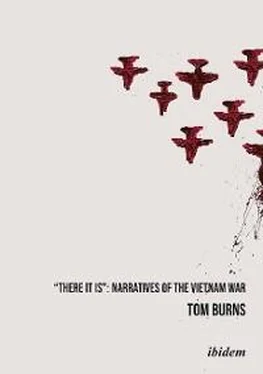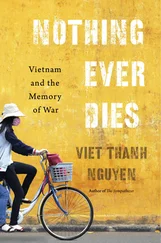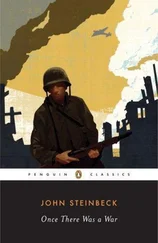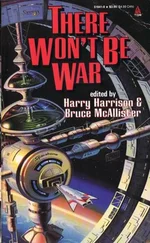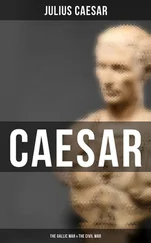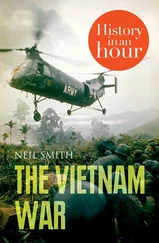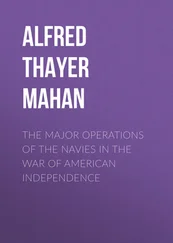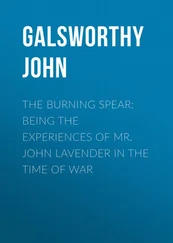Tom Burns - There It Is - Narratives of the Vietnam War
Здесь есть возможность читать онлайн «Tom Burns - There It Is - Narratives of the Vietnam War» — ознакомительный отрывок электронной книги совершенно бесплатно, а после прочтения отрывка купить полную версию. В некоторых случаях можно слушать аудио, скачать через торрент в формате fb2 и присутствует краткое содержание. Жанр: unrecognised, на английском языке. Описание произведения, (предисловие) а так же отзывы посетителей доступны на портале библиотеки ЛибКат.
- Название:There It Is: Narratives of the Vietnam War
- Автор:
- Жанр:
- Год:неизвестен
- ISBN:нет данных
- Рейтинг книги:5 / 5. Голосов: 1
-
Избранное:Добавить в избранное
- Отзывы:
-
Ваша оценка:
- 100
- 1
- 2
- 3
- 4
- 5
There It Is: Narratives of the Vietnam War: краткое содержание, описание и аннотация
Предлагаем к чтению аннотацию, описание, краткое содержание или предисловие (зависит от того, что написал сам автор книги «There It Is: Narratives of the Vietnam War»). Если вы не нашли необходимую информацию о книге — напишите в комментариях, мы постараемся отыскать её.
There It Is: Narratives of the Vietnam War — читать онлайн ознакомительный отрывок
Ниже представлен текст книги, разбитый по страницам. Система сохранения места последней прочитанной страницы, позволяет с удобством читать онлайн бесплатно книгу «There It Is: Narratives of the Vietnam War», без необходимости каждый раз заново искать на чём Вы остановились. Поставьте закладку, и сможете в любой момент перейти на страницу, на которой закончили чтение.
Интервал:
Закладка:
Not only the tone but the structure of the narrative works was to a certain extent pre-determined. Because the soldier’s individual tour of duty lasted a single year, the narrative trajectory of the war narratives dealing with individual experience has been determined by this time bracket. These works have a typical narrative arc. 101They begin with the new soldier arriving in Vietnam—with his prewar and training experiences either presented as a kind of prologue or inserted later into the body of the text as flashbacks—struggling to adapt to the disorienting atmosphere of the war, confronting his fear at his first taste of battle, gradually leaving behind his New Guy status to become an accepted member of the group, and, after experiencing hardships, horrors, and even some joy, ends with his boarding the “Freedom Bird,” the plane that will take him back to the “World,” as soldiers called the States, home, or civilian life. In many accounts, however, the story does not end there, as the “World” itself has become a place that seems alien to the returning vet. Chronologically, the part of this master-narrative that takes place in Vietnam is conveniently contained within the year-long in-country time bracket. Chronologically, it may therefore be contrasted with the World War II narrative accounts that cover an individual’s experiences during a single battle, or a campaign, or even the entire war.
The individual narrative of Vietnam can also be seen as forming a part of an overall historical narrative within which the individual works may be read. In a widely cited bibliographical commentary (1987), John Clark Pratt divided the narrative fiction of Vietnam into a “tragic drama” of five acts, including prologue and epilogue, a scheme that has the virtues of making evident the fundamental historical grounding of the narratives and allowing the insertion of a great number of works. It is characteristic of the novels, Pratt writes, that they “have as their crisis actions the events of a major political, social, or military upheaval,” 102for example, the assassination of Diem, the Tet offensive, a major military operation, or the fall of Saigon. It has been suggested more recently that although Pratt’s scheme has been useful for grouping the first wave of novels, works that can be “primarily defined as combat novels,” in recent years a “second stage” of imaginative works has emerged that focus on the return of the veteran to civilian life. These novels chronologically overlap the war and postwar years. 103
Other new works (which may be seen as constituting a third stage in Vietnam fiction) have brought the war home, “expanding” it chronologically and spatially as well as thematically, to include narratives that treat the reverberations of the war in American society and culture beyond the experiences of individual veterans. Clearly, both volume and scope of what was once confidently called the “Vietnam novel” have greatly increased, so that Philip K. Jason can even include science-fiction novels that allegorize the war and detective novels with hard-boiled protagonists who were Vietnam veterans as examples of Vietnam War novels. 104Evidently, this category, like that of the larger category of the “war novel” within which the Vietnam War novel may be placed, has in turn become part of the “loose, baggy monster” that Henry James saw as the essence of the novelistic genre.
iv. The Present Study
The list of narrative works on the Vietnam War continues to grow (one bibliographer lists 3,500 titles since 1977 to his time of writing, although only a fraction of these are imaginative works), 105It is therefore obvious that every work, perhaps even quite a number of deserving ones, cannot be discussed by a single writer. Starting from a list compiled by Pratt, as well as his bibliographic commentary and personal suggestions, I have tried to include a much larger number of works than usual in the critical commentaries of previous books and articles. Such commentaries proliferated during an earlier period, but they seemed to me to constantly recycle criticism of a half-dozen of the same works. In the present study, I have therefore tried to discuss a much greater number of works than are usually discussed, including a few that have to my knowledge never been discussed. To do this required providing extensive plot-summaries, although these have been intertwined with the criticism of the novels in question. It is unlikely that any reader (except perhaps one writing a book like the present one) would read all these novels in their entirety; retelling their stories at length has the function of informing the reader of several works on the same subject or theme that he/she may not wish to read while helping him select one he/she might like to read. I myself have never particularly enjoyed reading articles or hearing lectures on works that I had not read but that seemed to presuppose that I had. At the same time, to appeal to non-academic readers, I have tried to keep Lit-Crit jargon to a minimum, introducing such terms only when it seemed useful for the discussion at hand. Finally, as Tobey C. Herzog did with his study of the combat literature, I have also tried to establish parallels with earlier works of war literature.
As for the organization of discussing these works, I have generally followed Pratt’s proposed bibliographical chronology, which has two axes: in reading Vietnam fiction, he writes, one “should establish two frames of reference...first, the approximate place and time period of the book’s internal action; and second, an external frame of reference that includes a knowledge of the basic historical events plus the book’s date of writing and publication.” 106The only difficulty to this admirable plan is that while the basic historical events ground the fiction in history, the date of writing (an indeterminate time after the events depicted) cannot always be established.
The early narratives on Vietnam discussed in Part I, “Partisans” (cf. Table of Contents), are more easily arranged chronologically. These works are particularly interesting for their varied political attitudes and perspectives, which are often missing in later narratives that take the war for granted and concentrate mainly on action and events. To begin the study of narratives of the Vietnam War, four novels are discussed in the first chapter. They are distinguished by their diverse national points of view—British, American, French, Vietnamese—and will be examined in the order of their historical chronology as determined by the time of their internal action. Three of these novels are said to have been based on the exploits of the quintessential American adventurer, Edward G. Landsdale. The first section, accordingly, focuses on his life and activity within the historical context of the early American participation in Vietnam during the 1950s and early 1960s.
Graham Greene’s seminal novel of 1955, The Quiet American , whose context is the French struggle with the Viet Minh during the years 1951-52, seems to have inspired both Lederer and Burdick’s Cold War tract, The Ugly American (1958), and a more recent response, Ward Just’s A Dangerous Friend (1999), a “rewriting” of Greene’s novel but about events that occur over a decade later. Both M. J. Bosse’s The Journey of Tao Kim Nam (1959) and Jean Lartéguy’s Yellow Fever (1962) give an imaginative glimpse into the historical events of the French colonial war in the mid-Fifties, albeit from opposite sides.
Chapter Two is devoted to five novels that have varied political stances on the Diem regime, its demise, and related military events in the year 1963. Chapters Three and Four discuss a fairly large number of novels that represent the fighting during the period of American advisors after Diem’s fall: the years 1963-64. Certain themes and character types are introduced in these two chapters as being pervasive in the works discussed, even while the individual novels vary widely both in literary value and political attitudes. The fictions examined in Chapter Three, mostly published in the pre-Tet mid-1960s, I have defined as “pro-war” (e.g. the best-selling The Green Berets , by Robin Moore, 1965). These novels are more optimistic and naïve about motivations and possible outcomes. By contrast, those discussed in Chapter Four, which were published in the late 1960s or even later, exhibit greater sophistication in handling the political and moral ambivalence of their characters, and, probably not coincidentally, seem to me to be more accomplished literary works.
Читать дальшеИнтервал:
Закладка:
Похожие книги на «There It Is: Narratives of the Vietnam War»
Представляем Вашему вниманию похожие книги на «There It Is: Narratives of the Vietnam War» списком для выбора. Мы отобрали схожую по названию и смыслу литературу в надежде предоставить читателям больше вариантов отыскать новые, интересные, ещё непрочитанные произведения.
Обсуждение, отзывы о книге «There It Is: Narratives of the Vietnam War» и просто собственные мнения читателей. Оставьте ваши комментарии, напишите, что Вы думаете о произведении, его смысле или главных героях. Укажите что конкретно понравилось, а что нет, и почему Вы так считаете.
